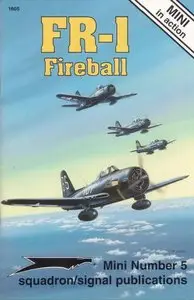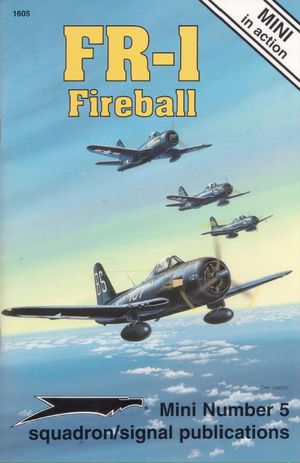Ernest McDowell, Joe Sewell - FR-1 Fireball (Mini in action Number 5)
Squadron/Signal Publications | 1995 | ISBN: 0897473442 | English | 50 pages | PDF | 36.19 MB
Squadron/Signal Publications 1605
Squadron/Signal Publications | 1995 | ISBN: 0897473442 | English | 50 pages | PDF | 36.19 MB
Squadron/Signal Publications 1605
When the United States Navy made the decision to enter the jet age, Navy planners were faced with a number of problems, especially given the state of the art at the time. Early jets required long runways for their take off runs and their high speed landing roll outs. Their high rate of fuel consumption resulted in a short range. This was compounded by the need for carriers to carry jet fuel in addition to standard aviition gasoline. These problems, coupled with the tricycle landing gear, which had never been used on a carrier, and the need for a catapult assisted take off would all have to be overcome before jets could go to sea on carriers.
Pilots would be required to develop special techniques to handle the tricycle gear and operating these jets from the smaller class of escort carriers did not seem to be possible.
One possible solution to these problems seemed to be a composite aircraft, one combining a piston engine with a jet engine in the same airframe. It was felt that such an aircraft would offer the best features of each power system, could be developed much faster and could operate from any carrier in the fleet at that time. The jet engine would provide the extra power needed for added speed in combat, give the aircraft a faster rate of climb and improve operational capabilities at all altitudes. It would also offer added safety, since the aircraft would be basically a twin engined aircraft and, if one of the engines became inoperative, it could return to the ship on the other. The piston engine would be used for take off and landing, for wave offs and for the most economical fuel consumption rate at cruising speeds.
It was obvious that this compromise clearly offered, at least, a temporary solution to the problems facing the Bureau of Aeronatutics (BuAer) headed by Admiral John S. McClain, in December of 1942. Consequently, a proposal for a composite fighter was drawn up and issued to nine aircraft manufacturing companies, including the Ryan Aeronautical Corporation of San Diego, California.
Ryan at once indicated their interest in the project and requested a meeting with the Navy officials which was quickly arranged. It only took Ryan's Chief Engineer, Ben T. Solmon , three hours to convince the Navy people that Ryan would be up to the task and that they had grasped the objectives of the proposal and were capable of doing the job.



